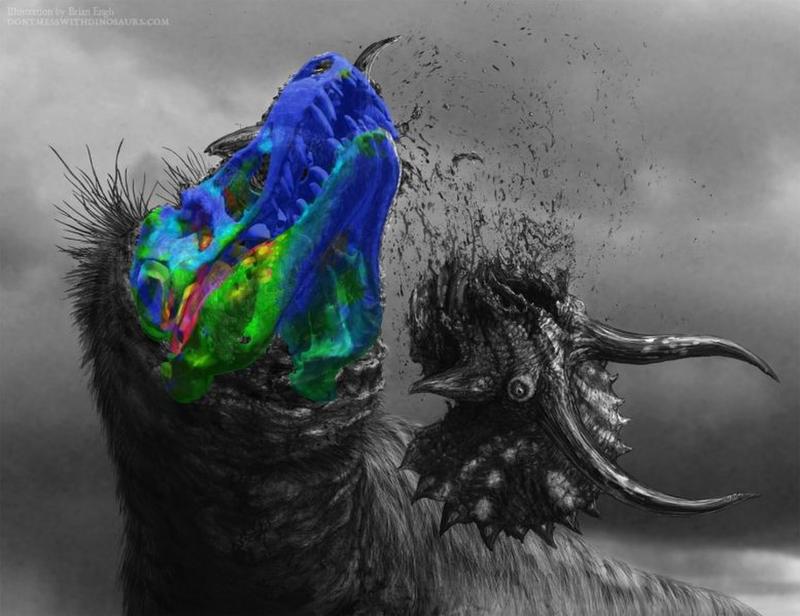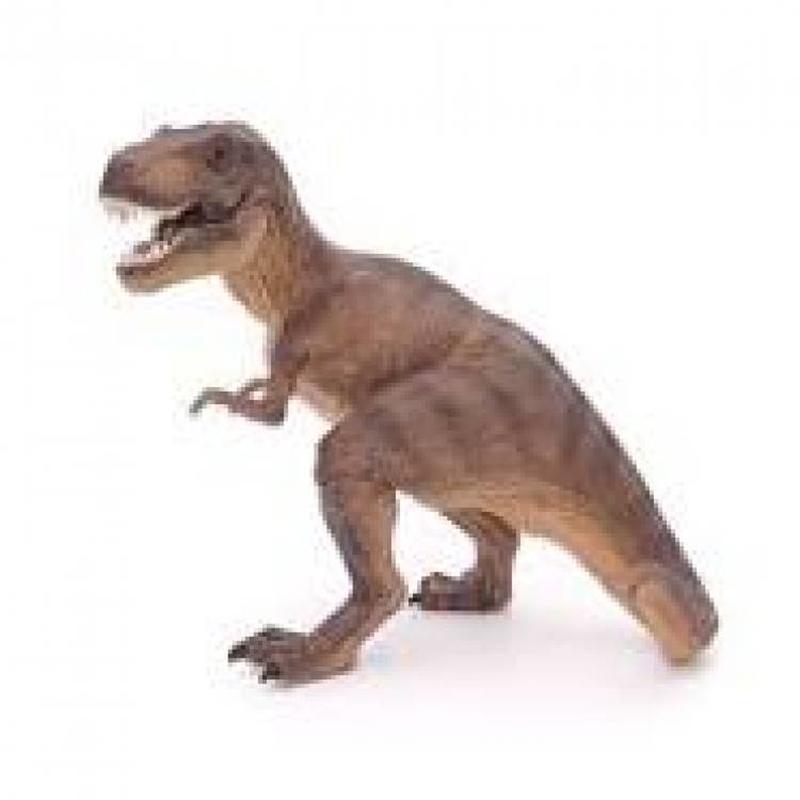We all have a very clear image of dinosaurs in our heads thanks to books and movies like Jurassic Park. We take these images as truth since they have been fed to us with such confidence by both books and films, but how could anyone actually know anything about a dinosaur?
While there are some very smart people looking into fossils, there are still many things that we don't know about dinosaurs, so when we find out new information it can be very exciting! What did they eat? How did they really look? How many different types of dinosaurs were there?
Luckily the people researching dinosaurs are only getting better and better, using new technology to discover new information that can radically change how we think of our lizard predecessors. Recently, scientists at the University of Missouri have made a 3d model that shows how a Tyrannosaurus Rex's skull and jaw work. The results are terrifying!

One detail about the Tyrannosaurus Rex that we somehow know is that it can bite hard enough to shatter bones. The big question other than "how do we know that" is "why doesn't the Tyrannosaurus Rex's break its own jaw when biting? Previously, scientists thought dinosaurs were more like birds or snakes with flexible jaws. They are now thinking that the T. Rex's skull is much more like a crocodile or a hyena.

Kaleb Sellers, a grad student at the MU School of Medicine says, "The T. rex had a skull that's 6 feet long, 5 feet wide and 4 feet high, and bites with the force of about 6 tons. Previous researchers looked at this from a bone-only perspective without taking into account all of the connections - ligaments and cartilage - that really mediate the interactions between the bones."
There are two present day relatives of the king of the dinosaurs, the T. Rex. Those are the gecko and the parrot. The scientists at MU used anatomy and engineering analysis to decipher how the T. Rex would have bitten.

Casey Holiday is an associate professor of anatomy at the MU School of Medicine. She said, "Dinosaurs are like modern-day birds, crocodiles and lizards in that they inherited particular joints in their skulls from fish - ball and socket joints, much like people's hip joints - that seem to lend themselves, but not always, to movement like in snakes. When you put a lot of force on things, there's a tradeoff between movement and stability. Birds and lizards have more movement but less stability. When we applied their individual movements to the T. rex skull, we saw it did not like being wiggled in ways that the lizard and bird skulls do, which suggests more stiffness."
The work at the MU won't only help paleontologists. The scientists at MU also believe it can help human and animal medicine. The lead researcher of the study said, "In humans, this can also be applied to how people's jaws work, such as studying how the jaw joint is loaded by stresses and strains during chewing. In animals, understanding how those movements occur and joints are loaded will, for instance, help veterinarians better understand how to treat exotic animals such as parrots, which suffer from arthritis in their faces."

It is exciting to see that there is still much more to learn about dinosaurs. Each discovery challenges or enhances what we already know. With each advancement in technology and scientific study, we will only learn more and more about the old rulers of the Earth.